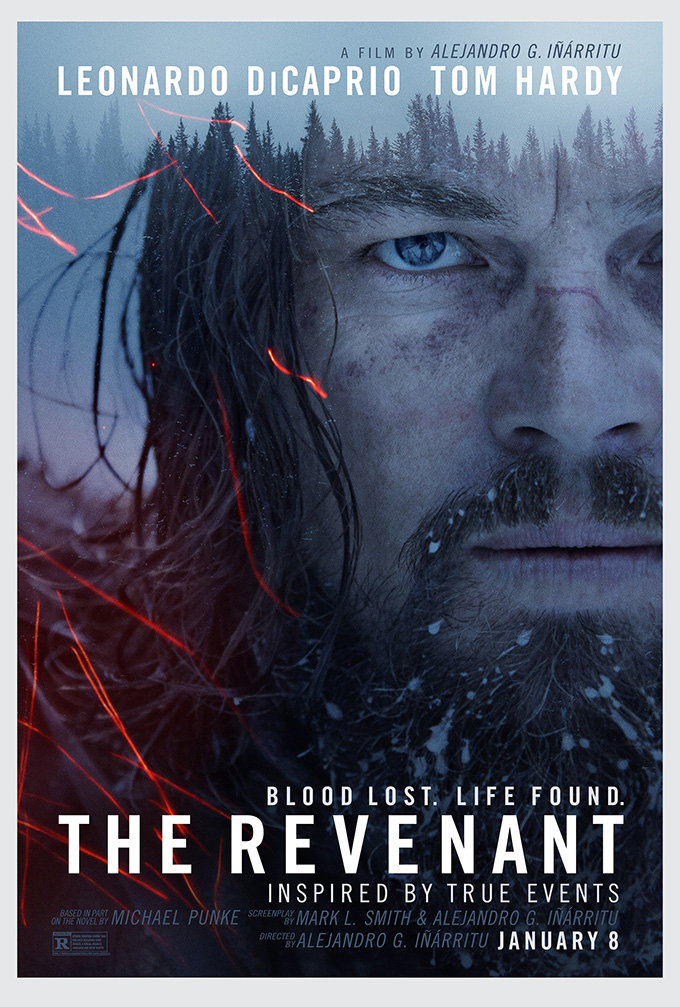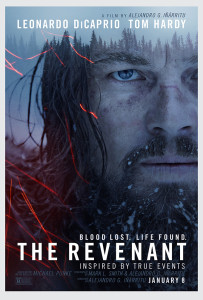
By Sean Ray | a&e editor

“The Revenant” is based on the true story of Hugh Glass, who crawled 200 miles to safety in 1823.
A Revenant. Defined as a form of undead which, unlike a zombie or a ghost, rises from the grave for a specific purpose, often revenge. “The Revenant,” starring Leonardo DiCaprio and Tom Hardy, plays off this theme of revenge from beyond the grave to create a wonderfully classic Western.
Based on the novel of the same name, which in turn is based on a true story, the film follows expert woodsman Hugh Glass, who is hunting along with a group of trappers for pelts to sell. However, the mission is interrupted when a tribe of Arikara American Indians attacks the group, searching for the kidnapped daughter of the chief. The hunters are forced to flee back to a fort hundreds of miles away.
In the course of their fleeing, Glass is attacked by a mother grizzly bear after stumbling upon her cubs. Despite killing the bear, he is in grave condition and is slowing the rest of the group down. The men resolve to leave him behind, with three men volunteering to wait with him until he dies and give him a proper burial. These men include Glass’s half Native American son Hawk, and Tom Hardy’s character John Fitzgerald.
As time passes and Glass refuses to die, Fitzgerald grows tired of waiting and attempts to murder Glass. Hawk arrives in time to stop him, only to be stabbed to death by Fitzgerald, who flees and leaves Glass for dead. Enraged, the man begins and epic trek back to the fort on his own, resolving to enact revenge on Fitzgerald for the murder of his son.
The film is a classic example of the western genre, very reminiscent of the grand journey in “The Searchers.” A definite strong point of the movie is the cinematography, featuring beautiful scenes of America’s untamed wilderness and expertly crafted long shots that remind views of Alfred Hitchcock or Orson Wells. Indeed, the first battle between the Arikara tribe and the fur trappers is an almost uninterrupted long shot which brutally pulls the audience in to the gritty world of frontiersmen.
Where the film falls short, however, is its pacing and length. Glass’s journey is very dragged out and not all of it is interesting to watch. I feel a big issue is that the film lacks an internal narration by Glass, which leaves the audience with long scenes of no dialogue and the main character stumbling around, doing things for unknown reasons.
Furthermore, while DiCaprio puts in a good performance as always, he is not given much to do in the film. Ninety percent of his scenes seem to consist of him grunting in pain and staring blankly forward. I found myself incredibly surprised when, over an hour into the movie, DiCaprio smiles for a scene, which turned out to be one of only two or three times Glass ever showed an emotion other than agony. Again, a running narration by DiCaprio could have solved this issue and let the actor show off his skills.
Instead, Hardy ends up stealing the show with his Fitzgerald, a truly unique villain. While cowardly, greedy and despicable, Fitzgerald subverts usual expectation, giving off an almost stoic evil. He is calm and collected, always logically rationalizing his actions to others and seems to be a world weary man who has seen it all. Even when Glass catches up with Fitzgerald, the antagonist does not seem to care, carrying on with his manner and trying to avoid the vengeful hunter the best he can, but never acting scared or worried about him.
In the end, “The Revenant” is a very good movie, but not a great one. It is very doubtful this is the film that will give DiCaprio his much desired Oscar and the 156 minute running length may bore some audience members after a while. But for anyone yearning for the return of the western, “The Revenant” delivers with thrills and an epic journey of revenge.

